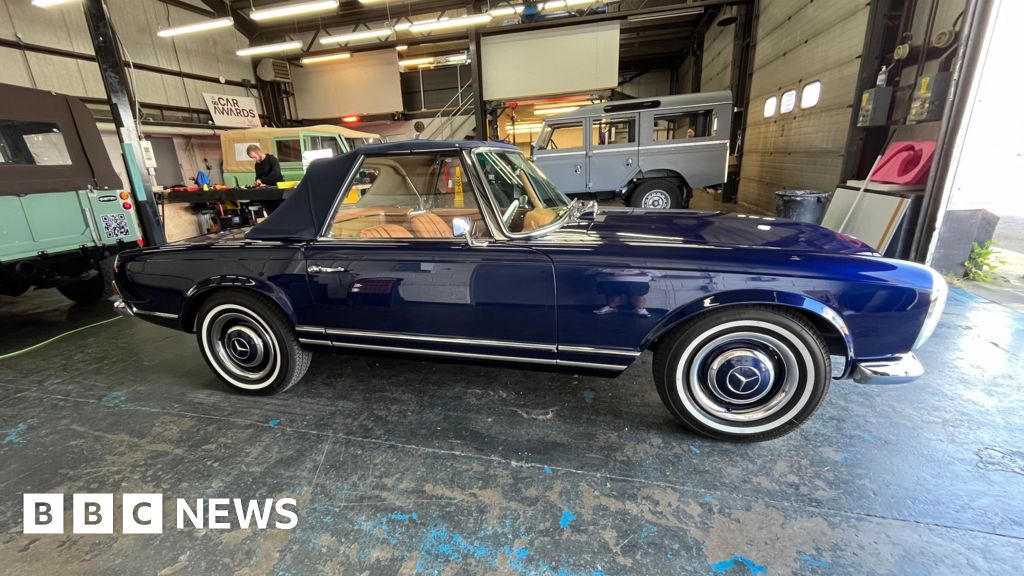A company is converting classic Land Rovers and Porsches to electric power to make more sustainable vehicles.
Older cars increasingly cannot drive in city centre low-emission zones, but Everrati, based in Upper Heyford, Oxfordshire, is removing petrol engines and mechanical drivetrains built more than half a century ago and replacing them with batteries.
“Creating a brand new car uses up to 20 tonnes of CO2,” founder and chief executive Justin Lunny told me.
“A car made 60 years ago is hugely sustainable,” he added.
One in six new cars is now powered by batteries.
Everrati’s latest prototype is a 1964 Mercedes Pagoda, an iconic two-seat sports car of the type once owned by John Lennon, John Travolta and, more recently, Harry Styles.
The car has been developed in a discreet workshop out of sight on a former US Air Force base.
Each car is built to order and does not come cheap. A good Pagoda sells for about £200,000 at classic car auctions. A customer pays Everrati about £330,000 to replace the engine with a battery, and restore every part of the vehicle to as-new showroom condition.
Everrati built its first car three years ago. It has 20 on the road, and 12 more are being built in Oxfordshire and at a site in California.
“It’s not for everybody,” Mr Lunny admitted. “It’s very expensive. But we’re creating something that will hopefully last a lifetime.
“We have people creating these with – and for – their children, because they want that legacy.”
He is now building six Land Rovers for a client in Dubai. Another is in the Hamptons outside New York.
“Buyers are usually wealthy people who love the idea of something that is now fully sustainable and reusable,” he explained.
“It’s the ultimate upcycling.”
Chief engineer Tony Fong demonstrated the controls on the Pagoda for me.
“The gearstick has been modified,” he said.
“Pull towards you for drive, push away for reverse. The gauge for the fuel tank now shows battery capacity. When this was built there were no hazard lights. We are engineering those in.”
Fashionable restaurants
What is it like to drive? On the former airfield’s perimeter road, it is much noisier than newer electric cars. It is a work in progress, full of quirky character.
I’ve driven a lot of classic cars, and this feels very different.
Because it is battery-powered, it has more performance now than when the original petrol car was built. It has a smaller range than a modern mass-produced car, and it charges more slowly too.
There are no seatbelts, no airbags or traction control. But it will be fitted with air conditioning to suit today’s clients. Such luxury was not available 60 years ago.
The car is no motorway mile-muncher. It is more likely to be seen in Instagram poses outside fashionable restaurants or summer parties than on a touring holiday.
With a total price tag above £500,000, this is a niche market. Most will be sold in North America and the Middle East.
Mr Lunny believes he could build 100 cars a year with his 20 staff. Beyond that, the ambition is to sell his bespoke battery and drivetrain technology to other carmakers.

